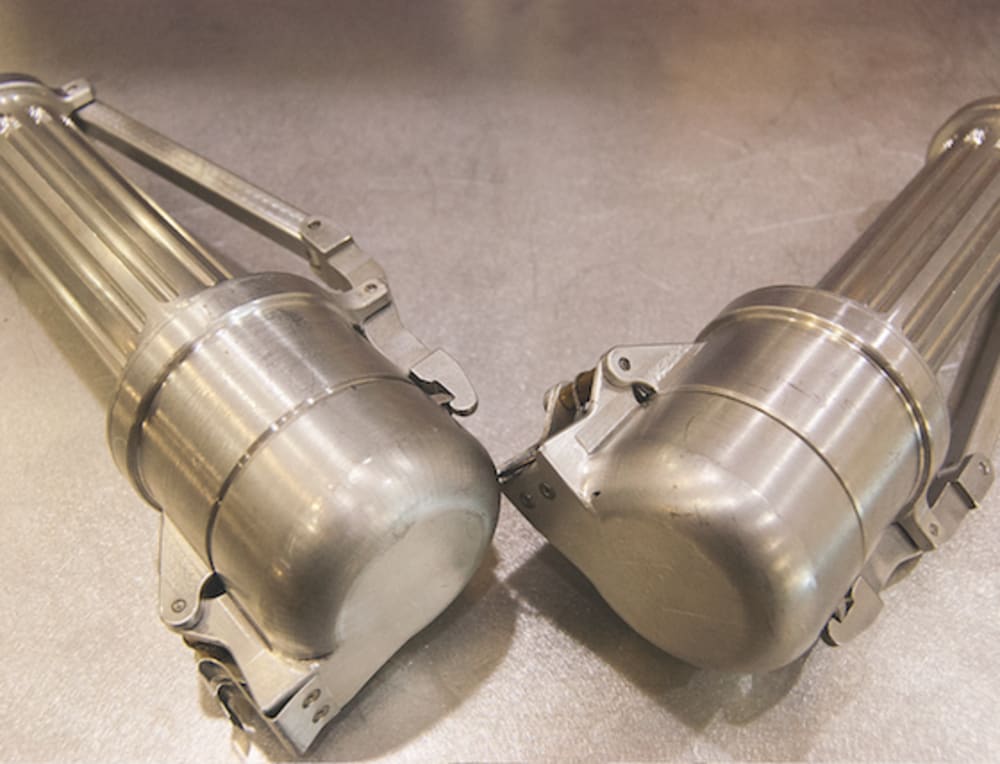NASAs Kennedy Space Center has developed a novel ruggedized housing for an electrical or fluid umbilical connector that prevents intrusion of dust, sand, dirt, mud, and moisture during field use under harsh conditions. The technology consists of a pair of hand-sized protective umbilical interface housings, each containing a connector with an integrated end cap. When the end cap covers the connector, the connector is protected. Each housing has a unique lever assembly connected to the end cap that, when squeezed, flips the end cap up to expose the connector. When in the up position, the two end caps face each other. To mate the connectors, the levers on both housings are squeezed, raising the end caps, and the two umbilicals are joined and twisted to couple them. Once the connectors are mated, the levers on both housings are released. This simultaneously seals both the umbilicals and the end caps. When dealing with cryogenic connectors, a purge can be applied to the housings to prevent icing when the connectors are demated.
These connectors are designed to be used in harsh environments and to withstand rough handling, such as being stepped on or rolled over by wheelbarrows or light vehicles. If the demated connectors are dropped or placed on the ground, the end caps will shield them from damage and contaminants. When mated, the seal between the housings and end caps keeps contaminants out. The end caps are latched to the housings so that the caps cannot be unintentionally opened; this latch can be opened only by depressing the levers. The spring used to open or close the cap is constructed of a shape memory alloy, allowing the cap to be opened and closed an almost infinite number of times. The cap actuation levers are designed so that only a 3/4-inch pull is needed to open the cap a full 190 degrees. The housings can accept most commercial-off-the-shelf electrical or fluid connectors (including those designed for cryogenics), thus eliminating the need for specialized connectors in hostile environments. The housings can also be grounded and scaled up or down to accommodate connectors of different sizes. The housings can be constructed of steel, aluminum, composites, or even plastic, depending on the environment in which they will be used and material cost constraints.
Like this entry?
-
About the Entrant
- Name:Jeffrey Kohler
- Type of entry:individual
- Patent status:pending

